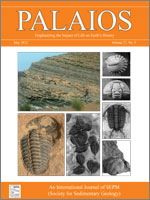This study represents a first attempt to observe soft-tissue decay in association with microbial mats, in order to recreate the death-mask model proposed for terminal Neoproterozoic Lagerstätten. This model explains the precipitation of authigenic iron sulfide minerals on, and around, decaying carcasses in association with microbial mats, cementing the sediment as a sole veneer and retaining the external morphology of the organism in relief on the upper and lower surface of coarse-grained sandy event beds. Although this model has been substantiated by the discovery of abundant microbially induced sedimentary structures (MISS) and pyrite veneers in close association with Ediacaran fossils, it has not been tested previously by experimental taphonomic studies under controlled laboratory conditions. Arthropod larvae that decayed on top of a cyanobacterial mat demonstrated higher quality preservation of fine-scale anatomy than larvae that decayed in the absence of a mat. Decay experiments involving bacterial mats and organic-rich sands generated a black ring extending radially from the decaying carcasses. When this precipitate was analyzed using XPS and ESEM-EDS it revealed the presence of likely iron sulfides, or at least spatially associated Fe and S, and localized concentrations of common aluminosilicate elements (Al, K, Fe, and Mg), which is a composition that has been documented in association with Ediacaran fossil preservation.
BioOne.org will be down briefly for maintenance on 17 December 2024 between 18:00-22:00 Pacific Time US. We apologize for any inconvenience.
How to translate text using browser tools
1 May 2012
EXPERIMENTAL FORMATION OF A MICROBIAL DEATH MASK
SIMON A. F DARROCH,
MARC LAFLAMME,
JAMES D SCHIFFBAUER,
DEREK E. G BRIGGS
ACCESS THE FULL ARTICLE
It is not available for individual sale.
This article is only available to subscribers.
It is not available for individual sale.
It is not available for individual sale.

PALAIOS
Vol. 27 • No. 5
May 2012
Vol. 27 • No. 5
May 2012




